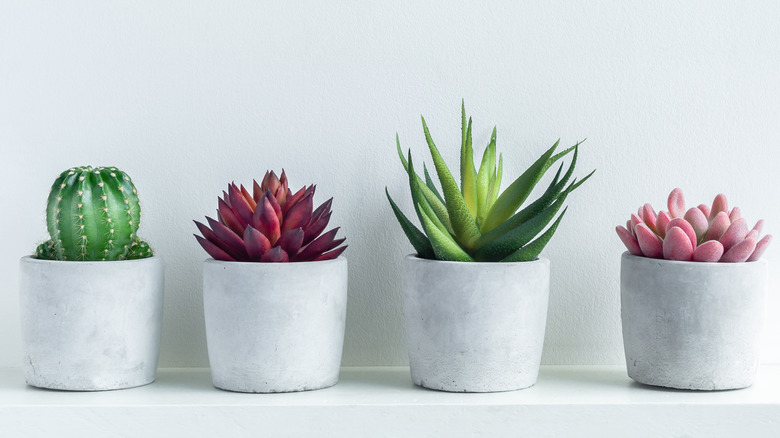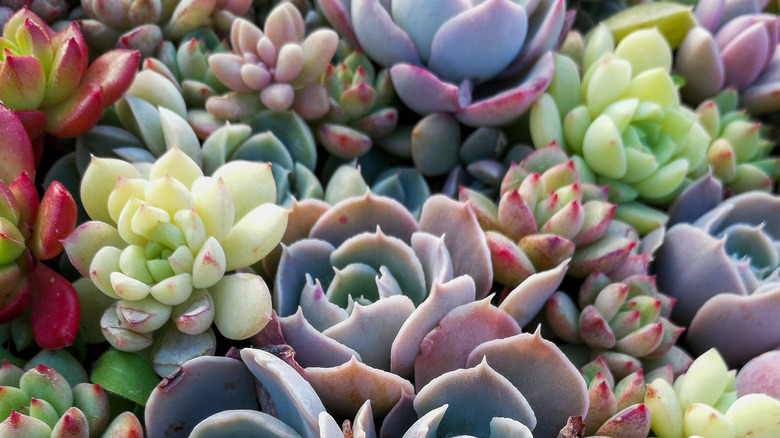The Surprising Reason Your Succulents Are Turning Pink
Succulents are some of the easiest plants to take care of, and they can even have health benefits when kept inside of the home. In fact, they're perfect for the home because they need little care and little water — and they're so absolutely adorable in any style of room! It's possible to make mistakes with your succulent plants, but they're overall an easy pop of color that adds another dimension of life to your space.
Naturally, succulents are green, though they can grow flowers of various colors. However, they can turn shades of red, orange, and pink depending on their environments and certain circumstances. Some of the most common succulents to change color are Crassula Red Pagoda Shark Tooths, Moonstones Pachyphytum, Aeonium Mardi Gras Rosettes, Echeveria Agavoides Lipstick, Red Carpet Sedum, and Sedum Spathulifolium (via Succulents Box).
If you're interested in knowing just why these succulents change color to begin with, we've got you covered.
Here's why your succulents are actually changing colors.
There are numerous reasons your succulents may be turning pink or red, and they all have to do with their environment and circumstances at the time of changing. They can turn color if exposed to an excessive amount of sun, if the weather becomes really hot or cold, if the plant is watered too sparingly, if the plant isn't fed well enough, and if the plant is in bad soil (via Succulent Plant Care).
Succulent Plant Care also explains that succulents are meant for harsh conditions, so their color changing is actually a self-preservation mechanism to help them survive; they are always adapting to their environment. Because of this, their color changing is not harmful to the plant whatsoever, and their color can always revert back to green once you've properly diagnosed and corrected the issue, such as not watering it regularly enough.
Have your succulents changed colors? There is plenty of room to experiment with your succulents, such as planting them in different sized pots to see how they adapt.

